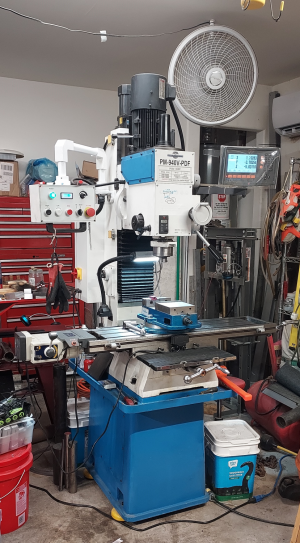- Joined
- Jun 22, 2023
- Messages
- 342
in that case you are aligning two divorce mounted pieces of equipment with a common shaft between, in that case a perfectly flat starting point is VERY important. in this case we are talking about an entirely different animal and the effort to get a perfectly flat mounting surface and he is talking about much flatter that .002", like i said having it that flat is nice but not worth the effort IMO, effort that can be used elsewhere to have more effect on the final outcome.I work in a world where they machine skids, 10' long and 8' wide, on a huge mill to flat for a 1000 HP motor and pump to +/-.002" so they can shim out the discrepancies. Why do that if you know the motor and pump are out +/- .060"? The answer is simple, if you have at least one reference surface as close as possible setting the equipment and aligning the equipment becomes easier and simpler with less shim material required.
I understand your point; however, when I do something I work to the most accurate tolerance possible knowing that I will not hit it but I'll be close, it simply matters to me....
the base of the mill conforming to the concrete base so that it is not warped when bolting to the concrete base, and if the base of the mill is not flat then attaching it to a perfectly flat base will warp the mill and make it worse if you really want to have a positive impact shimm it level and apply a metalized epoxy between the concrete base and the mill base before tightening the base to the concrete
Last edited:


